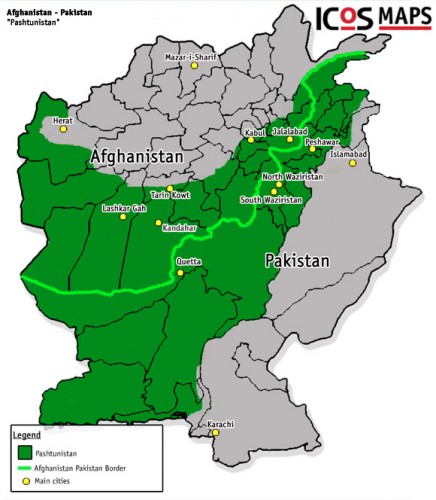In addition to the futurist Afghanistan 2050 Roundtable going on here at Chicago Boyz, I’d like to point out some bloggers and academics dealing with the region’s present:
Chris Albon – US Military And Pakistan Flood Relief
Since July, monsoon rains have caused heavy flooding in many areas of Pakistan. The United Nations estimates more than 20 million people are affected. In response the disaster, the United States has launched a civilian and military relief effort in the country. As part of that effort, US military fixed and rotary wing aircraft are ferrying people and supplies to and from the flood zone. Below are thirteen photos from that military response.
Please consider donating to the NGO flood relief effort here or elsewhere
Spencer Ackerman – Petraeus: Here’s My Afghan Redeployment Strategy
…. Some units pulled out of stable districts might find themselves heading for more volatile ones. “You maybe take one company and send it somewhere else. Maybe send it home,” Petraeus explains. “We want to reinvest some of the transition.” It won’t necessarily be the case that a unit that “thins out” from a district heads directly home. “Some will, certainly,” Petraeus qualifies. “And this is all premature.”In keeping with Petraeus’ admitted addiction to PowerPoint, the general passes on a briefing slide, titled “Transition,” to explain his thinking. The assessment for drawing down will be built around “Districts, Provinces, Functions [and] Institutions,” looking for what can be handed to Afghans with minimal disruptions in security. In our interview, he elaborates that “institutions” means U.S. functions like training the Afghan security forces – jobs that don’t have to remain American duties indefinitely. According to the slide, it’s a process that will draw on what security gains the U.S. command in charge of training Afghan security forces believes the Afghans can maintain; and the Afghan government itself.
Pundita – On the matter of indicting Oxfam and International Red Cross for war crimes, and a grim warning for U.S. military, Former PM Nawaz Sharif says Pakistan doesn’t need Western flood aid, and other tales of flood aid to Pakistan and Taliban blitzkrieg in North Afghanistan. NATO blindsided. I do not want to hear they didn’t get help from Pakistan military
….Same basic message to United Nations, IMF, World Bank, and the rest of the so-called international community. Stop helping Pakistan’s regime rape their country’s poor. Every time they get away with stealing from you, you’re just reinforcing the idea that they do nothing wrong — else why do you keep giving to them? Just stop it, you goddamn fools. Just stop.The Taliban said they would donate USD 20 million to flood relief effort if the regime wouldn’t take money from Western governments. Hold to them their offer. Then shake the country’s rich until they collectively cough up a billion USD for flood relief. That’s how it’s done. That’s how civilized humans act when extorted by fiends.
Walter Russell Mead –The Roots of Pakistan’s Rage and Pakistan’s Crisis: It’s More Than The Militants
Things were tough enough during my stay. On my way in from the airport in Karachi, traffic was unusually light. Roving gangs of armed thugs were roaming through the city, pillaging gas stations. The police force was laughably overwhelmed; the only gas stations that stayed open had battalions of private security. Meanwhile, up to 100 people died there in violence between the organized gangs of criminals known in that unhappy city as political parties, schools and businesses are closed in fear, and tens of thousands of families already living at the margins of existence are losing their daily wages until peace returns. One night during my visit a vicious goon threw a hand grenade into a group of worshipers performing their evening prayers in a Karachi mosque; nothing in this city is sacred anymore.
In Khyber-Pakhtunkhwa, formerly known as the Northwest Frontier Province, and currently on the front line of the COFKATGWOT (the currently nameless Conflict Formerly Known As The Global War On Terror) assassins killed the son of a prominent official and Safwat Ghayyur, the Commandant of the Frontier Constabulary. Three million people became homeless in the early stages of the flood; since then monsoon rains continue to inundate the highlands, and successive flood crests is move inexorably down river, spreading devastation through the Punjab and overspreading the country’s most valuable and productive agricultural land across both Punjab and Sindh.
Hat tip to Eddie!

